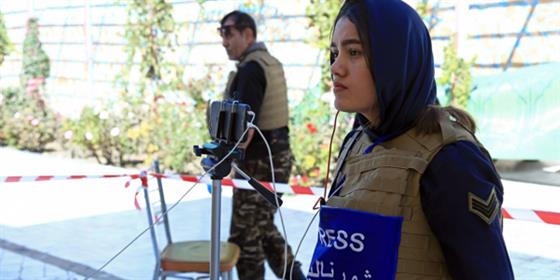Breaking the silence: Women journalists fight harassment in the workplace

From pay gaps to physical abuse and online trolling. Women journalists across the world continue to face inequality and harassment in the workplace with little or no consequence for the perpetrators.
From pay gaps to physical abuse and online trolling. Women journalists across the world continue to face inequality and harassment in the workplace with little or no consequence for the perpetrators.
On 2 November, International Day to End Impunity for Crimes against Journalists, a new study released by International Media Support (IMS) documents the enormous challenges and pressures in society and the workplace shared by women journalists across four continents.
The study, “The safety of women journalists: Breaking the cycle of silence and violence” shows that women journalists in nine countries across Asia, Africa, the Middle East and South America share similar challenges in the workplace ranging from gender-based unequal opportunities such as low pay and longer working hours, to severe physical abuse and online harassment.
“Not only are women targeted for their journalism, but also for their gender. Fewer women journalists reporting freely translates into fewer women and women’s issues and voices represented in media. This has massive implications for the diversity of perspectives presented to the public, as well as inequality of representation in the public sphere. It is time for all media houses, big or small, to develop gender-specific guidelines that ensure equal working conditions and anti-harassment policies,” says Jesper Højberg, Executive Director of IMS.
The study shows that shame and social stigma tied to sexual harassment in the workplace prevents women journalists across nine countries from reporting or talking about their ordeal. Most often, colleagues and superiors are the perpetrators. This means that many women remain silent while others simply quit journalism.
Online harassment of women journalists is another global challenge raised in the study. Recent statistics convey that two out of three women journalists have been subjected to this. In Kenya, 75 per cent of women journalists in a survey cited in the IMS study had experienced online abuse, but less than 10 per cent of these women had reported this maltreatment.
The study shares best practices to improve the safety and working conditions of women journalists. Colombia and Afghanistan have integrated a gender-specific focus into their national safety mechanisms for journalists that monitor attacks, address legislation, provide gender-sensitive training for law enforcement agents and offer psychological and financial support to women journalists.
In Somalia, advocacy campaigns aimed at media owners to improve women journalists’ working conditions run by the Somali Women Journalists’ Association have resulted in an unprecedented move by ten media houses to provide three months paid maternity leave. The anti-cyber-bullying 2017 Byte Back campaign run by the International Federation of Journalists Asia-Pacific and the South Asia Media Solidarity Network in Nepal shared innovative ways to fight online abuse and highlight gaps in media house policies countering online harassment.
The study concludes that advocating for a women-specific focus in journalist safety mechanisms, pushing for legislation that protects against gender-based violence and policies and training in anti-harassment in media houses and of law and order personnel would improve the safety of women journalists in the workplace.
For more information contact hwa@mediasupport.org.
https://www.mediasupport.org/breaking-the-silence-women-journalists-fight-harassment-in-the-workplace/?fbclid=IwAR2N7VWrfSOwjRaSHTPwl_brCq4KFuV55QisY_i5YrmY-3wZVDVpl6zpib8
IMS
PM:02:34:04/11/2019
viewer 276